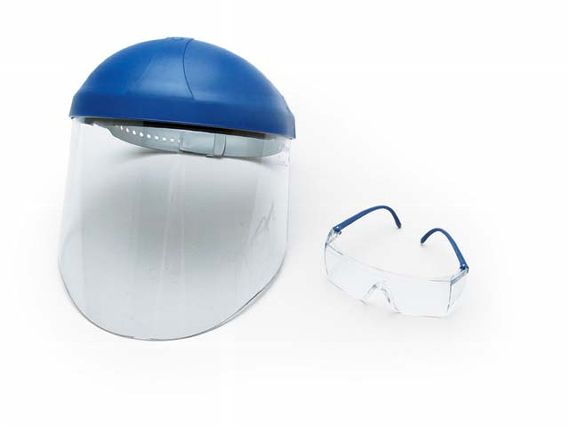 | Eye and face protection
| Eye and face protection
I believe that casual, amateur workers are more likely to injure themselves than professionals for several reasons. They often don't receive proper training in safe practices and equipment use. Most learn just enough about the tools and materials they work with to achieve their immediate objective. If hobbyists are regulated by OSHA, they usually don't know it, and they don't have a foreman come around and kick them off the job site if they don't have proper protective equipment. Working alone, it's difficult to learn from others' mistakes. Professionals see accidents happen to other people, and they trade war stories with each other.
I have a constant struggle to get others working in my shop to take any safety precautions at all. We work there on our own time, and the attitudes are those of casual hobbyists. It's a little bit macho to get dirty; it shows a work ethic, where fussing about cleanliness and avoiding contact with the job at hand can seem prissy. Prissiness has yet to gain a foothold in the dark, dirty world of internal combustion. We are old enough to know we are mortal, but believe a car or motorcycle accident is sure to get us before the long-term effects of breathing spray paint fumes or brake cleaner. Safety equipment is expensive, and fussing around with it takes time. We aren't rich, and we don't have a lot of extra time. Let's just get the job done. If we get headaches, we can walk outside and breathe fresh air until it goes away. What's an MSDS? This weekend, I called a good friend to see how he was doing. After a couple minutes chatting normally, he revealed that he was sitting in the waiting room of an ER in Michigan, holding gauze on his face. He had been working with an angle grinder in close quarters, and it kicked back, slashing him from left to right. A favorite with many girls, life may be a little different from now on. I've been wanting to feature eye protection in "Tool of the Month" for some time, but hadn't thought of including a face shield.
I grew up with expensive, bulky and heavy stereo headphone-style hearing protection and fully enclosed safety goggles. Modern equipment is far more comfortable and convenient. Inexpensive safety glasses are all-day comfortable and the free flow of air behind them helps prevent fogging, as well as reducing the basic tendency to sweat.
In industrial settings, safety glasses are generally required whenever someone enters a work area. That's not bad practice at home, either. I have a rule to never get under a car without safety glasses, and it sucks every time I break it. But you don't need gravity or rotating machinery. In the last year, Sport Compact Car's Dave Coleman and I have both gotten eyes full of brake fluid when bending over the vicinity of a master cylinder, with no reason to expect anything to fly 2 ft up toward our face.
A face shield is properly used only in addition to safety glasses, never by itself. It would have prevented my friend's grinder injury, but it is too far from the face to prevent small items flying past its edge. Whether a clear shield as shown here or a welding helmet, legal requirements are met only when safety glasses with side shields are worn under the larger covering.
There are other items I keep in the shop and highly recommend. I've written about gloves in this space before. I bought a charcoal-filter respirator mask more than ten years ago. It is a significant investment, but every time it has allowed me to breathe chemical-free air in a toxic environment has justified its price. Foam ear plugs, on the other hand, are so cheap they're almost free, and I keep plenty around.
All this stuff is available at your local hardware store. Buy it and use it. It's your body.
